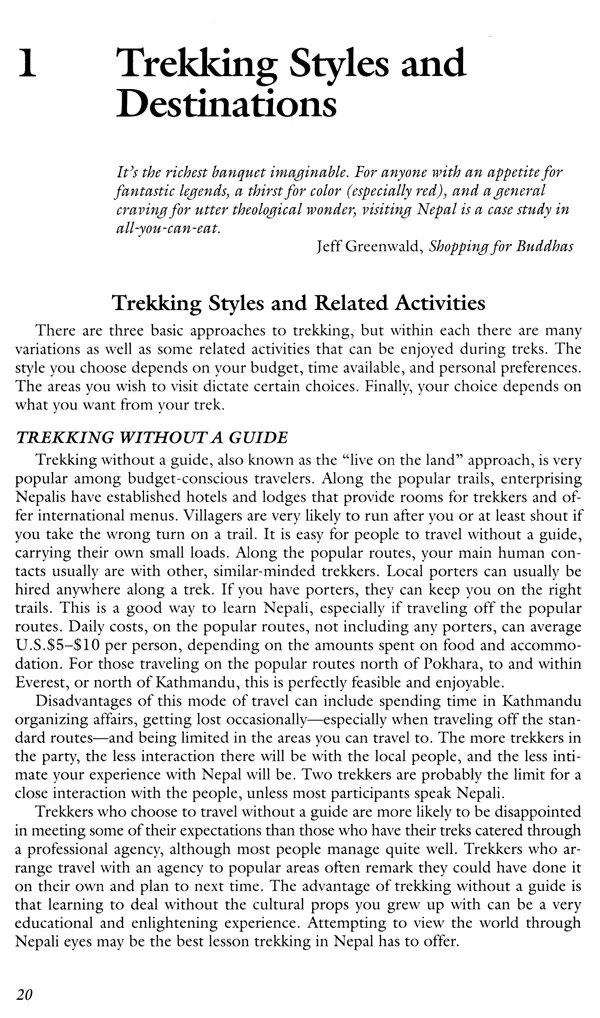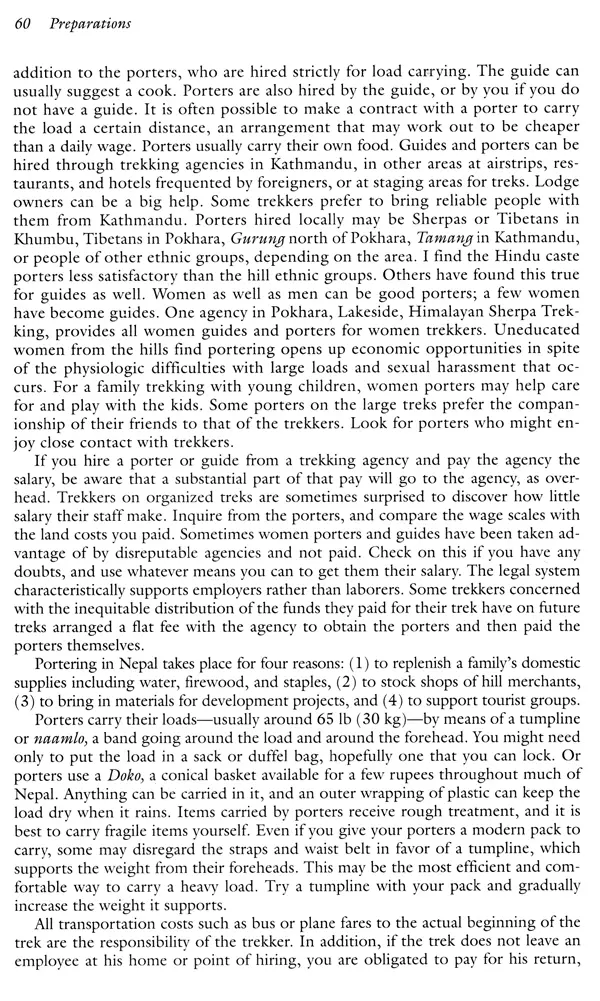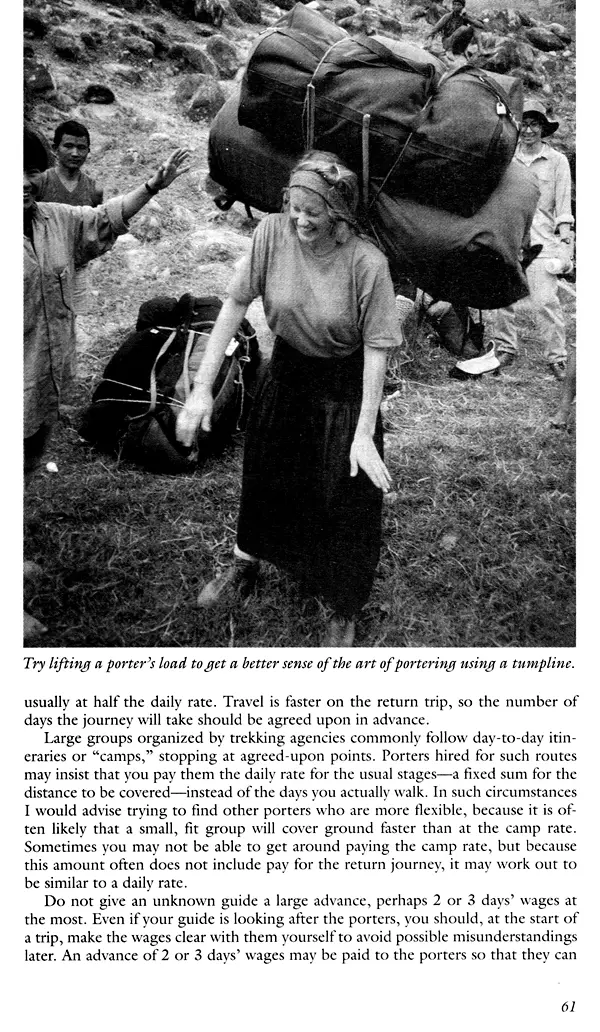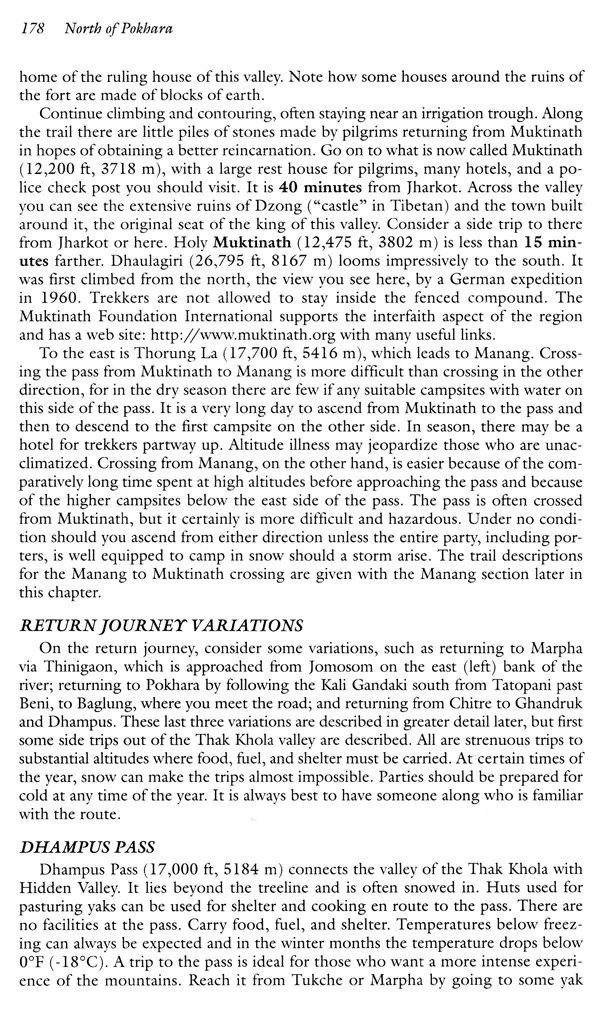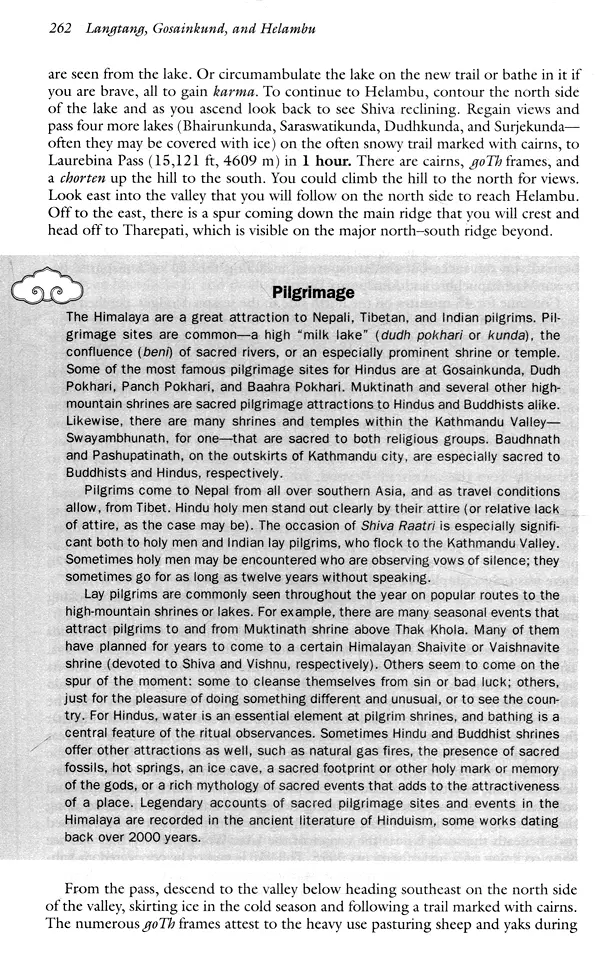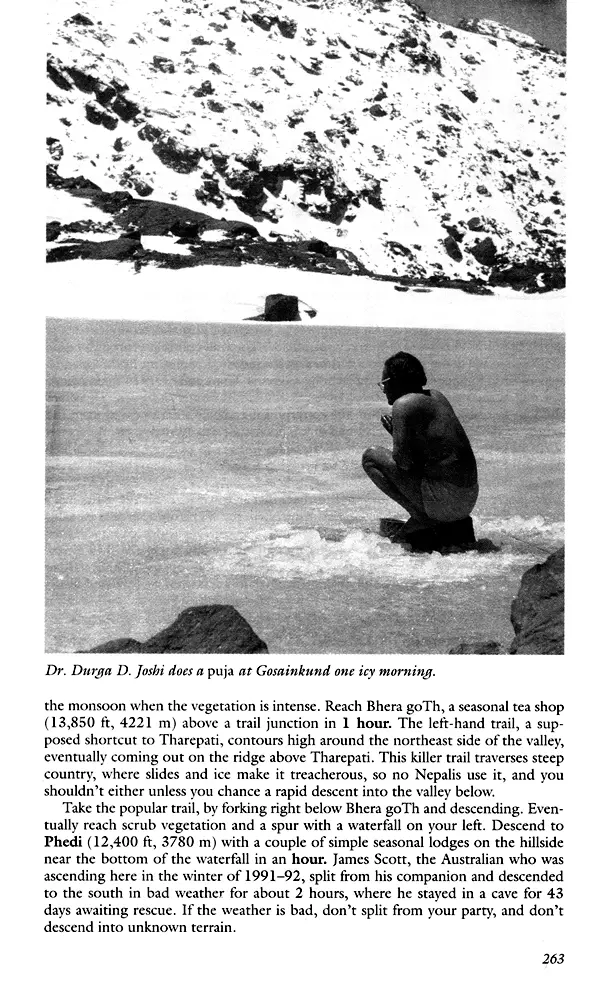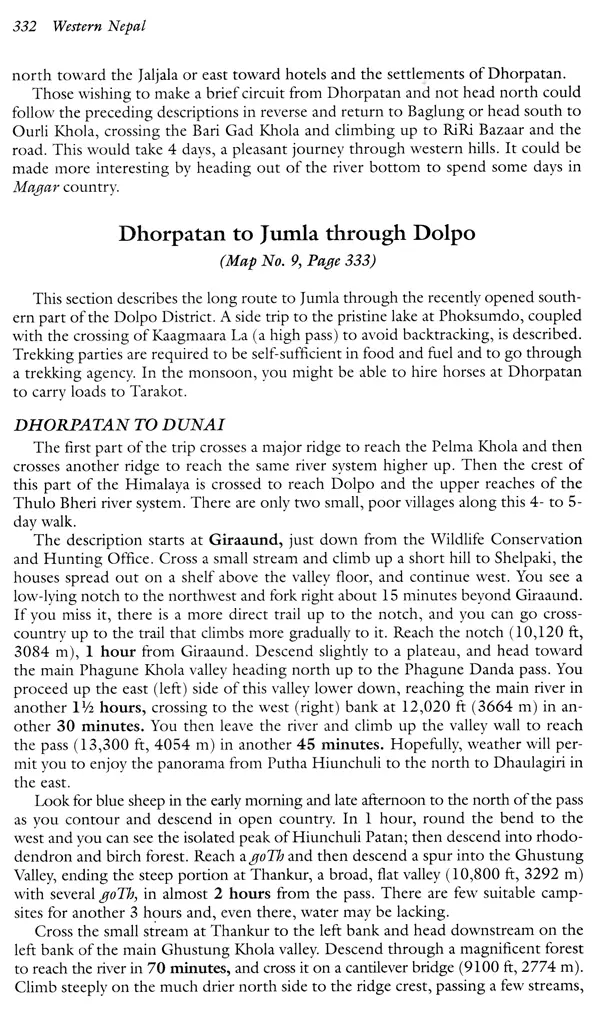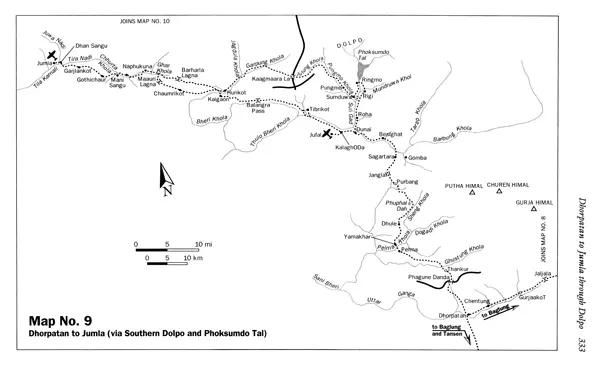
Trekking in Nepal: A Traveler's Guide (7th Edition)
Book Specification
| Item Code: | UAU144 |
| Author: | Stephen Bezruchka |
| Publisher: | Mandala Book Point, Nepal |
| Language: | English |
| Edition: | 2001 |
| ISBN: | 9789993310105 |
| Pages: | 382 (Throughout B/w Illustrations) |
| Cover: | PAPERBACK |
| Other Details | 8.50 X 5.50 inch |
| Weight | 430 gm |
Book Description
Stephen Bezruchka first went to Nepal in 1969, drawn by his interest in climbing and a desire to get close to the world's highest summits. He spent a year there, between graduate studies in mathematics at Harvard University and the study of medicine at Stanford University, and wrote the first edition of this guide. His fascination with Nepal soon transcended its lofty mountains to focus on the social cultural matrix that is a lifelong passion.. He returned to work in Nepal in the mid-1970s and in the mid-1980s. Initially he helped set up a community health project in western Nepal. Later he developed a remote district hospital as a teaching hospital for Nepali doctors and supervised the first physicians training there. Currently he is working with Nepali doctors to enable medical officers posted in remote district hospitals to carry out necessary surgery. Stephen Bezruchka has trekked far and wide in Nepal. He has climbed in the far ranges of the earth, including the Yukon, Pakistan, and China and on Everest. He is the author of Nepali for Trekkers, The Pocket Doctor: Your Ticket to Good Health while Traveling, and Altitude Illness: Prevention and Treatment. Of Ukrainian de scent, he traveled to the Ukraine and toured outdoor museums there that reminded him of the way life continues in Nepal today. He teaches at the School of Public Health and Community Medicine at the University of Washington and practices medicine in Seattle, but the lure of Nepal, the land and its people, keeps calling him back.
Nepal is on the map for the adventure traveler, and even the casual tourist. Ad venture used to be for the elite or crazy, but now "adventures" are undertaken by ordinary people in economically rich countries-perhaps a disease of the com plex, modern, postindustrial society. Trekking in its various styles is an increasingly popular activity, with over 80,000 participants in Nepal annually. Especially along the popular routes, there have been many changes over the span of almost thirty years that I have been fortunate to be involved with Nepal.
Trekking is so popular because of the landforms in this remarkably varied coun try and because of the nature of the Nepali spirit. What can be done to enhance the experience of both the visitor and the Nepali host? Clearly it is understanding on both sides that is necessary. With the remarkable quality of Nepali tolerance, there is little that needs to be said about that aspect. But for the visitor, there is much to be learned about the way of Nepal if you want to be respected by your hosts. That is the purpose of this book. Whether you are going with an agency, organizing your own portered trip, or going it alone, this book will help you have an experience that is remarkable, memorable, and close to the heart of Nepal. For even though you might surmise that the larger numbers of tourists will dilute the hospitality of the Nepali people, the opposite is true. The more you are sensitive to the ways of Nepal, the more intimate and wonderful your experience. This will set you apart from the others.
My purpose in writing this guidebook is to provide visitors with the information they need to be culturally appropriate and environmentally sensitive guests in this remarkable country and to keep them on the correct trails. Some tourists who come to Nepal want to be served in ways they can't in their own country because they can't afford it. Such tourism is neocolonial imperialism and, although you can't entirely escape elements of it in your travels, I try to show you ways to get beyond this mode. It is still possible to have the same wonderful, intimate experience with Nepali people today that I had almost thirty years ago. Today there are options that make it easier to not have this opportunity. This book will help you avoid these options if you wish a different experience than suggested by the glossy adventure travel brochures. In this atypical guidebook, I try to provide various insights to the riches of this perhaps most diverse spectrum of peoples and terrain in the world. I pose mentally stimulating questions, many that are unanswerable, as well as present
information about what is seen, heard, or smelled. I have also written a booklet on the Nepali language. It is sold separately in a pocket size version, together with a language tape, to help you study the baasaa before you go and to learn it as you trek. There is no more important advice I can give you to enjoy Nepal than to study Nepali and use it in the country. Nothing cise will as easily set you apart from the other trekkers.
Stephen Bezruchka's book has proved a resounding success. Many of the trekkers I see each year in the Himalaya carry a much-used copy as a guide and friend. Since 1976 when I first wrote a foreword to A Guide to Trekking in Nepal, I have seen many changes in the country-both good and bad. Population pressure has relentlessly increased and the growth of tourism has been quite remarkable. Many of the walking tracks and campsites are cleaner now as trekking agencies make greater efforts to tidy up behind them. But in the mountains the climbing expeditions still leave piles of rubbish around. There has been a determined effort to increase refor estation but the steep hillsides are frequently barren and scarred with great slips carrying soil down into the flooded rivers.
But despite the devastation Nepal is still very beautiful. The mountains are as superb as ever and the people just as friendly. Trekking in Nepal is an experience never to be forgotten. Those of us who have been around a long time can see the changes but the newcomer sees only the drama and the beauty. Perhaps it is better that way. We must desperately battle for environmental protection but not lose our ability to absorb the remaining beauty of the mountains and the valleys. It is the responsibility of all of us to encourage reforestation and make a determined effort to leave the country at least as tidy as we found it-or maybe a little bit better.
Book's Contents and Sample Pages


